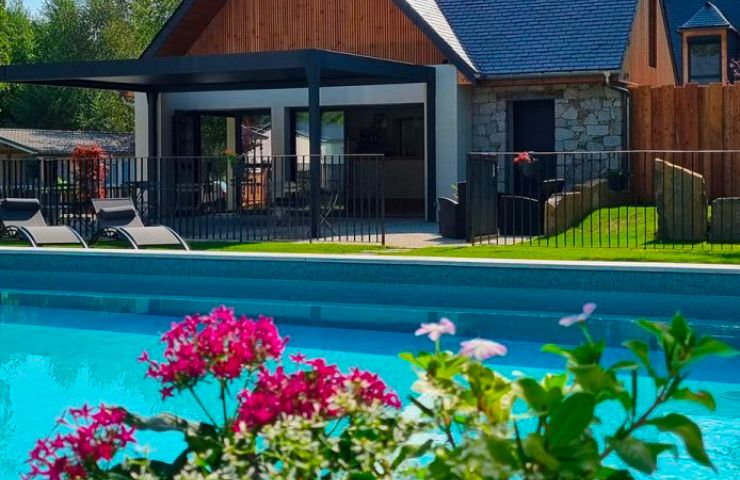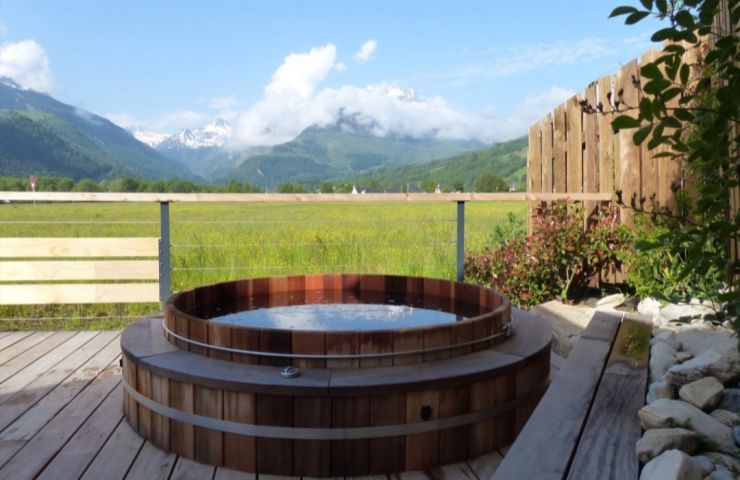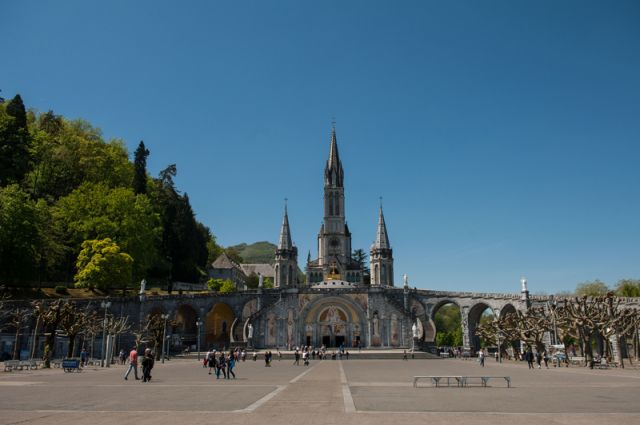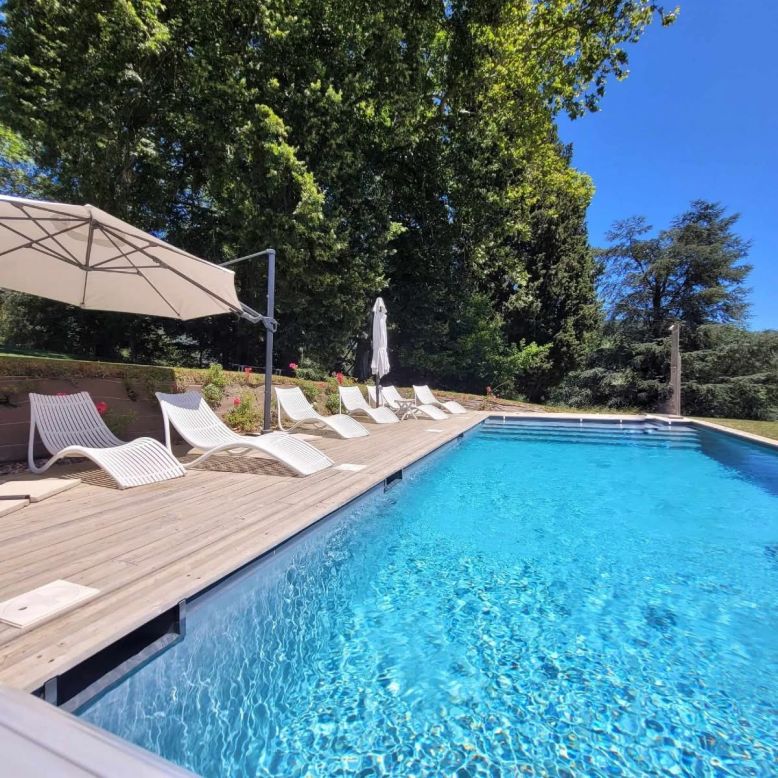- Home page
- Tourism
- Discover
- Visit Toulouse region and the French Pyrénées
- Hautes Pyrénées - Lourdes and The Vallées des Gaves
- Visit Toulouse region and the French Pyrénées
- Discover
- Tourism
Lourdes and The Vallées des Gaves, beauty of the Pyrenees
Welcome to one of the most beautiful sites of the Pyrenees. Cirque* de Gavarnie (A cirque is an amphitheatre- like valley formed by glacial erosion), Pont d’Espagne and Val d’Azun, views that are calling you to discover an unspoiled and preserved landscape, ideal for enjoying many leisure activities. The Gaves Valley, also called in Gascony language “Lavedan” is a mountain region with rivers and valleys in the upper reaches of Lourdes.
LOURDES, MAJOR PILGRIMAGE DESTINATION
Lourdes attracts 6 million visitors each year, pilgrims and tourists come from all over the world keen to discover Lourdes and its surroundings.
Lourdes is situated on the banks of the Gave de Pau River. To discover the city, head towards the ‘sanctuaries’ area: The Massabielle Cave, where the Virgin Mary appeared 18 times to Bernadette Soubirous, and where a “miraculous” spring flows; the crypt in the original sanctuary; the basilica of Notre-Dame-du-Rosaire, built between 1883 and 1889 for the fiftieth anniversary of the apparitions, and linked to the basilica of the Immaculate-Conception, the way of the cross of Espéluges; the underground basilica of Saint Pie X, dedicated in 1958 for the hundredth anniversary of the apparitions, one of the largest concrete buildings in the world, in the shape of a boat hull.
There are many museums to visit: the museum Sainte Bernadette, to learn everything about the life of the saint; the birthplace of Bernadette or the mill of Boly where the family lived until they were expelled for not paying their rent; the father’s house or mill Lacadé, Museum shop; the Cachot, a cabin of 13 m2 (149 square feet) loaned by the commune in which the family was living during the period of the apparitions; the fortified castle, built on a rocky promontory, which was the residence of the Counts of Bigorre and since 1921 has housed the Pyrenean Museum, an Arts and traditions museum; the wax museum, gathering a number of biblical characters realised by the artists of the Grévin Museum; the Lourdes Museum, exhibiting the reconstitution of a street from Bernadette Soubirous time.
Take the cable car, which dates from the beginning of the 20th century to climb to Pic du Jer, 1,000 metres (3,280 feet), to enjoy a beautiful panorama of the region. At the top, take the botanical path leading to the astronomical observatory.
Around Lourdes, many forests and lakes for walks and leisure activities, such as the green way, which is traced on the former railway tracks, going from the Gaves of Lourdes to Luz-Saint-Sauveur and which is ideal to discover the area on foot or by bike.
Around ten kilometres west from Lourdes, Saint-Pé-de-Bigorre is a picturesque village with narrow streets, with a beautiful square with arcades, a 6th century Roman abbey and gardens overlooking the Gave de Pau River, a site where you can practice canoeing or kayaking and where our French champions train.
Read our full article on the visit to Lourdes, by clicking HERE. (fr)
 Our blogger went to discover Lourdes. She tells you EVERYTHING through many tips! > Read the article
Our blogger went to discover Lourdes. She tells you EVERYTHING through many tips! > Read the article
ARGELÈS-GAZOST, ENTRY GATE OF THE GAVES valley
Subprefecture of the Hautes-Pyrenees, Argelès (the high city) -Gazost (the low city basse) is the entry gate of Lavedan, ideal geographic location, at the heart of the most beautiful regions. It is also a spa resort.
At the entrance of the town, the Pyrenees Animal Park, presenting the Pyrenean Fauna: goats, foxes, squirrels, and above all: beavers. The Donjon of the Eagles, in Beaucens, shelters birds of prey from around the globe in the transformed ruins of an old feudal castle. Argelès Gazost is the starting point in the nature reserve of the Pibeste-Aoulhet massif or the Hautacam massif.
In the village of Saint-Savin, the Abbey dates from the 11th and the 12th centuries.
 A lift is installed for people with reduced mobility at the Parling level. This allows effortless access to the village. It is indicated by a red sign. > Read the article (fr)
A lift is installed for people with reduced mobility at the Parling level. This allows effortless access to the village. It is indicated by a red sign. > Read the article (fr)
CAUTERETS, a town with BELLE ÉPOQUE ARCHITECTURE
Cauterets is a thermal resort that became famous following the visits of Chateaubriand, Victor Hugo, Sarah Bernard and Debussy.
It is also a ski resort (1,850-2,400 metres / 6,069-7,874 feet) with 24 slopes and 15 ski-lifts. The town is surrounded by peaks (Péguère, Moun-Né, Cabaliros, Vignemal, Chabarrou…), lakes (Gaube, Estom, Ilhéou), waterfalls, rivers, pine forests and clearings.
In town, the old railway station has become the bus station. This building is the former pavilion of Norway presented to the universal exhibition of Paris in 1889. The former cable car station was built by Gustave Eiffel contains shops and coffee shops. The former Grand Hôtel d’Angleterre, built in 1875, houses the Museum 1900, which brings back to life the glorious past of the Belle Epoque.
The Pont d’Espagne (The Bridge of Spain) is a classic excursion in a magical place, in a pine forest, beeches and firs, surrounded by many waterfalls. Built in 1889, it facilitated getting to the Spanish border. Pont d’Espagne is accessible via, Pont de la Rallière) Bridge of Rallière (offering many hiking paths), plan 1h30 walk, or by car using the Puntas parking, then a 15 minutes walk, or it is accessible via the shuttle from Cauterets bus station.
By carrying on walking approximately 15 minutes beyond Pont d’Espagne, you will reach the Meillon monument with a viewpoint on the legendary peak of Vignemale (3,298 metres – 10,820 feet). It is also the starting point for a hiking trail towards the Gaube Lake, a magnificent landscape with deep blue water.
LUZ-SAINT-SAUVEUR, CAPITAL of the toy country
Luz-Saint-Sauveur is a mountain village, with its fortified Saint André Church, renown for its spas. It was appreciated by Eugénie and Napoléon III who built a bridge in 1860, which allowed the Saint Sauveur road to be extended towards Gavarnie.
Luz-Saint-sauveur is ideally situated at the crossroad of Tourmalet and Pierrefitte. “Toy” means in catalan “small”, like the fifteen villages perched around (Viscos, Sazos, Viella, Viey, Sers…)
The CIRQUE of GAVARNIE, thrill Guaranteed
At the heart of the Pyrenees National Park, Gavarnie as well as Troumouse and Estaubé, are listed Unesco World Heritage sites.
Gavarnie is firstly a mountain village, with its 12th century roman style church, and as backdrop the cirque, one of the most beautiful and stunning panorama, with no less than sixteen 3,000 metres peaks (9,842 feet).
It is Victor Hugo who talks about it the best: “It is a mountain and a wall at the same time. It is the edifice of the most mysterious of the architects. It is the Colosseum of nature; it is Gavarnie.’ Created by nature, it is one of the biggest European glacial sites. It can be reached on foot from the village, pan a 2 hours return walk. The village is also the starting point of many hiking trails of varying levels of difficulty.
THE VAL D’AZUN, EDEN OF THE PYRENEES
This preserved valley is the territory of agriculture, rivers, caves and authentic mountain villages (Aucun, Arras-en-Lavedan, Arcizans-Dessus, Arrens-Marsous...), narrow mountain roads (Couraduque, Soulor, Aubisque and Bordères…), lakes (Estaing, with emerald waters). It is a favourite destination for tourists who want to enjoy the many outside sport and leisure activities.
Campsite Cap Pyrenees
Campsite Cap Pyrenees
Camping Cap Pyrénées **** offers you in all seasons, panorama, serenity and conviviality. Ideally located in ...
1,7 km - Aucun
Azun Nature
Azun Nature
AZUN NATURE: YOUR WELLNESS ESCAPE IN THE HEART OF THE PYRENEES At Azun Nature, every stay is synonymous with ...
1,7 km - Aucun
Campsite Azun Nature
Campsite Azun Nature
Comfortable accommodations and spacious pitches in the Hautes-Pyrénées Open year-round, the 4-star Azun Nature ...
1,7 km - Aucun
OUR CITY GUIDES IN EUROPE

















